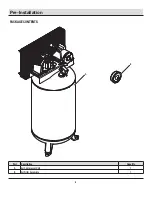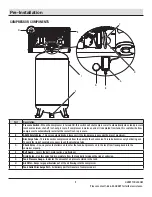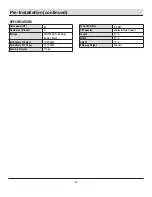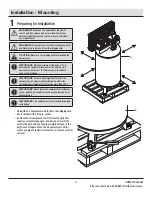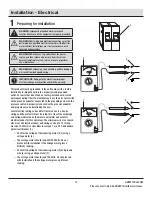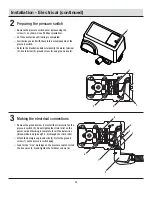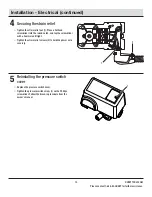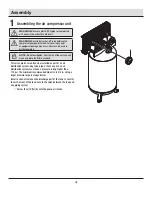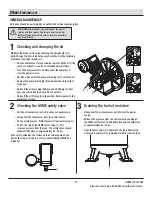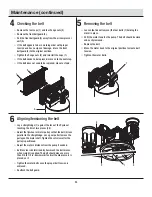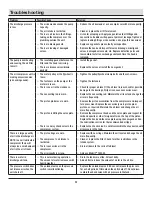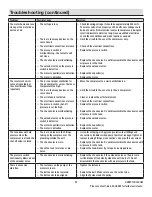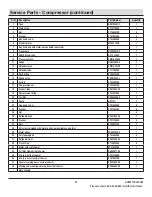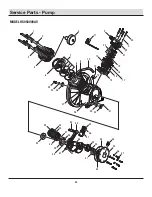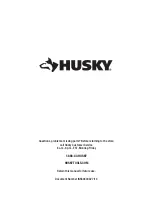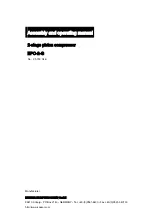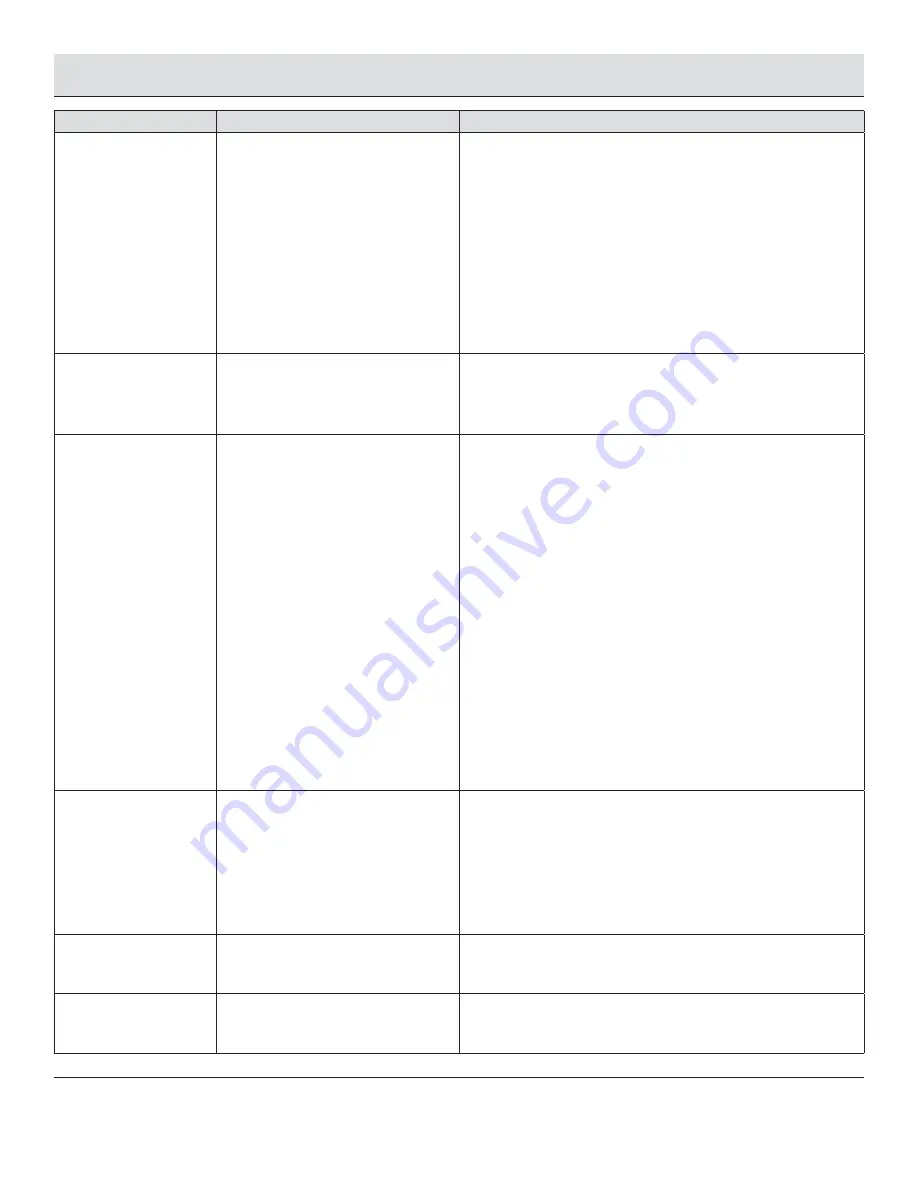
22
Troubleshooting
Problem
Possible Cause
Solution
The discharge pressure
is low.
□
The air demand exceeds the pump
capacity.
□
Reduce the air demand or use a compressor with more capacity.
□
The air intake is restricted.
□
Clean or replace the air fi lter element.
□
There are air leaks in the fi ttings,
tubing on the compressor, or the
plumbing outside the unit.
□
Listen for escaping air. Apply soap solution to all fi ttings and
connections. Bubbles will appear at points of leakage. Tighten or
replace leaking fi ttings or connections. Use pipe thread sealant.
□
There are blown gaskets.
□
Replace any gaskets proven faulty on inspection.
□
There are leaking or damaged
valves.
□
Remove the head and inspect for valve breakage, misaligned
valves, damaged valve seats, etc. Replace defective parts and
reassemble. Install a new head gasket each time the head is
removed.
The pump is overheating
and causing the air fi lter
to melt.
□
The insulating gasket between the
fi lter and the head is missing.
□
Install the gasket.
□
There are broken valves / blown
gaskets.
□
Replace the valves or install the new gasket.
The air compressor unit is
making excessive noise
(a knocking sound).
□
The motor pulley or the fl ywheel is
loose.
□
Tighten the pulley / fl ywheel clamp bolts and the set-screws.
□
The fasteners on the pump or the
motor are loose.
□
Tighten the fasteners.
□
There is no oil in the crankcase.
□
Check for proper oil level; if the oil level is low, check for possible
damage to the bearings. Dirty oil can cause excessive wear.
□
The connecting rod is worn.
□
Replace the connecting rod. Maintain the oil level and change the
oil more frequently.
□
The piston pin bores are worn.
□
Remove the piston assemblies from the compressor and inspect
for excess wear. Replace the excessively worn piston pin or
pistons, as required. Maintain the oil level and change the oil
more frequently.
□
The piston is hitting the valve plate.
□
Remove the compressor head and the valve plate and inspect for
carbon deposits or other foreign matter on the top of the piston.
Replace the head and the valve plate using the new gasket. See
the Lubrication section for the recommended oil type.
□
There is a noisy check valve in the
compressor system.
□
Replace the check valve. Do not disassemble the check valve with
air pressure in the tank.
There is a large quantity
of oil in the discharge air.
NOTE: In an oil lubricated
compressor there will
always be a small amount
of oil in the air stream.
□
The piston rings are worn.
□
Replace with new rings. Maintain the oil level and change the oil
more frequently.
□
The compressor’s air intake is
restricted.
□
Clean or replace the fi lter. Check for other restrictions in the
intake system.
□
There is excessive oil in the
compressor.
□
Drain oil down to the correct full level.
□
The oil viscosity is wrong.
□
Only use Mobil 1
®
10W-30.
There is water in
discharge air / tank.
□
This is normal during operation.
The amount of water increases with
humid weather.
□
Drain the tank more often. At least daily.
□
Add a fi lter to reduce the amount of water in the air line.
The pressure switch does
not release air when the
unit shuts off.
□
The unloader valve on the pressure
switch is malfunctioning.
□
Replace the unloader valve if it does not release the pressure
for a short period of time when the unit shuts off. Do not disas-
semble the check valve with air pressure in the tank.

